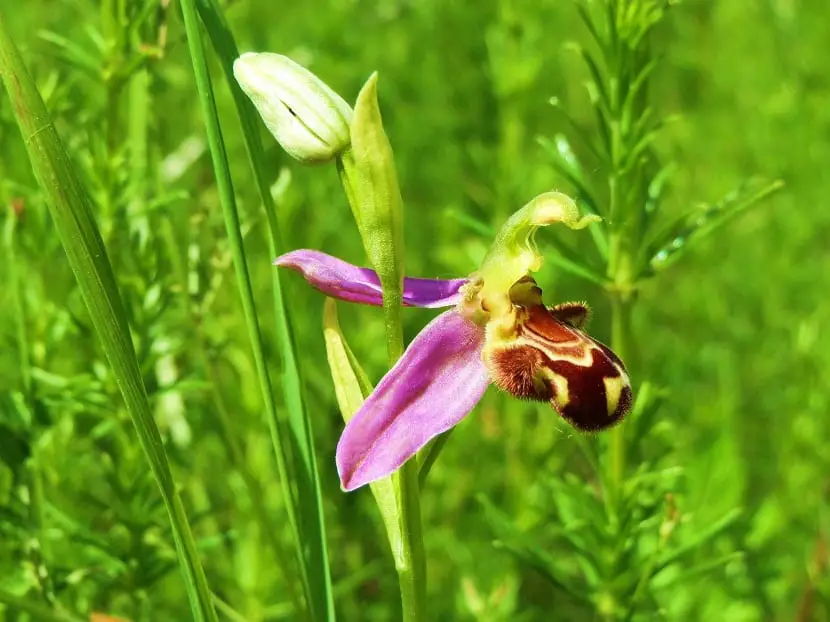
The orchid Ophry’s mirror It is the scientific name of the Iberian Orchid, also known as Venus Mirror Orchid, Mirror Bee Orchid and Bee Flower Orchid, named for its emblematic bumblebee-like lobe or because of the blue color of a mirror. This is one of the most striking species due to its beauty.
This is a wild orchid whose outline is reddish brown full of hairs and has a beautiful bluish purple color.
Features

Orchids can comprise around 25 thousand species. Orchid families are extremely diverse and its fruit is an elongated capsule that encompasses a large number of seeds.
For its beauty it is very common for this orchid to be associated with love rituals.
In their natural state they can be seen in forests, meadows, in a kind of Pine (Carrasco), in low vegetation and all kinds of soils, where they can be exposed to the sun. It blooms almost at the end of winter between the months of February to April.
These flowers are nourished through the photosynthesis process using moisture, light, and some minerals from the soil. Their diet is not exclusive to the photosynthesis processhaving to take advantage of the fungi (called mycorrhizae) that inhabit its roots.
They can be found in the Mediterranean Region except for some islands. It is quite common in Almería, Alicante, Granada, Jaén, Málaga, Murcia, Palencia and Seville, although it is generally very rare. In some provinces there are regulations around it in order to protect them.
As one of the main characteristics of this flower is that they are terrestrial, they can be planted in small pine logs, rock, etc..
Its conservation in nurseries or inside the home is not usually that easy, it is advisable to follow some instructions for its care, but do not be discouraged, since with proper care your plant can last up to 20 years.
Pollination of the Ophrys speculum
The male bumblebee is the one who fertilizes the orchid by confusing the lip of the flower with that of a female.
They become impregnated with pollen while trying to copulate with the flower, filling with pollinia that adhere to the back of the insect and that is when when trying to copulate with another flower, the pollinia loosen, thus fertilizing the other orchid. The wasp that is attracted to this orchid is called Dasyscolia ciliata.
Because these flowers lie close to the ground, Hymenoptera (wasps, bees and bumblebees) it is easier for them to reach them since they do not usually fly at great heights. In the same way, it is said that this type of flower is a great trickster, since with its attractive aroma, which is very similar to the pheromones produced by female wasps and its similarity to a wasp, they manage to achieve pollination.
Care

Water the roots of your orchid once a week. The best way to know the correct amount of water is by submerging the roots in a jar of water and once soaked, take them out and let it drain.
Leave its roots uncovered, this will allow the plant to have greater oxygenation and is in greater contact with sunlight.
It is recommended that when placing them in the pots a special fertilizer is used, usually composed of pine bark and polystyrene. Surely you can get it in any nursery.
Plagues and diseases
Transplant it every two years to remove its compounds and make its habitat more nutritious. Use suitable insecticidessince orchids are usually attacked by mites, aphids or mealybugs.
If you notice that the color of the leaves is darkening, it means that the plant requires greater exposure to sunlight and on the contrary, if its leaves are redder, they have excess light.
Prune your plant once the flower has wilted, cutting the stem at the first node. Remember that the pollination of the flower is done thanks to insects, so do not expect it to multiply.
